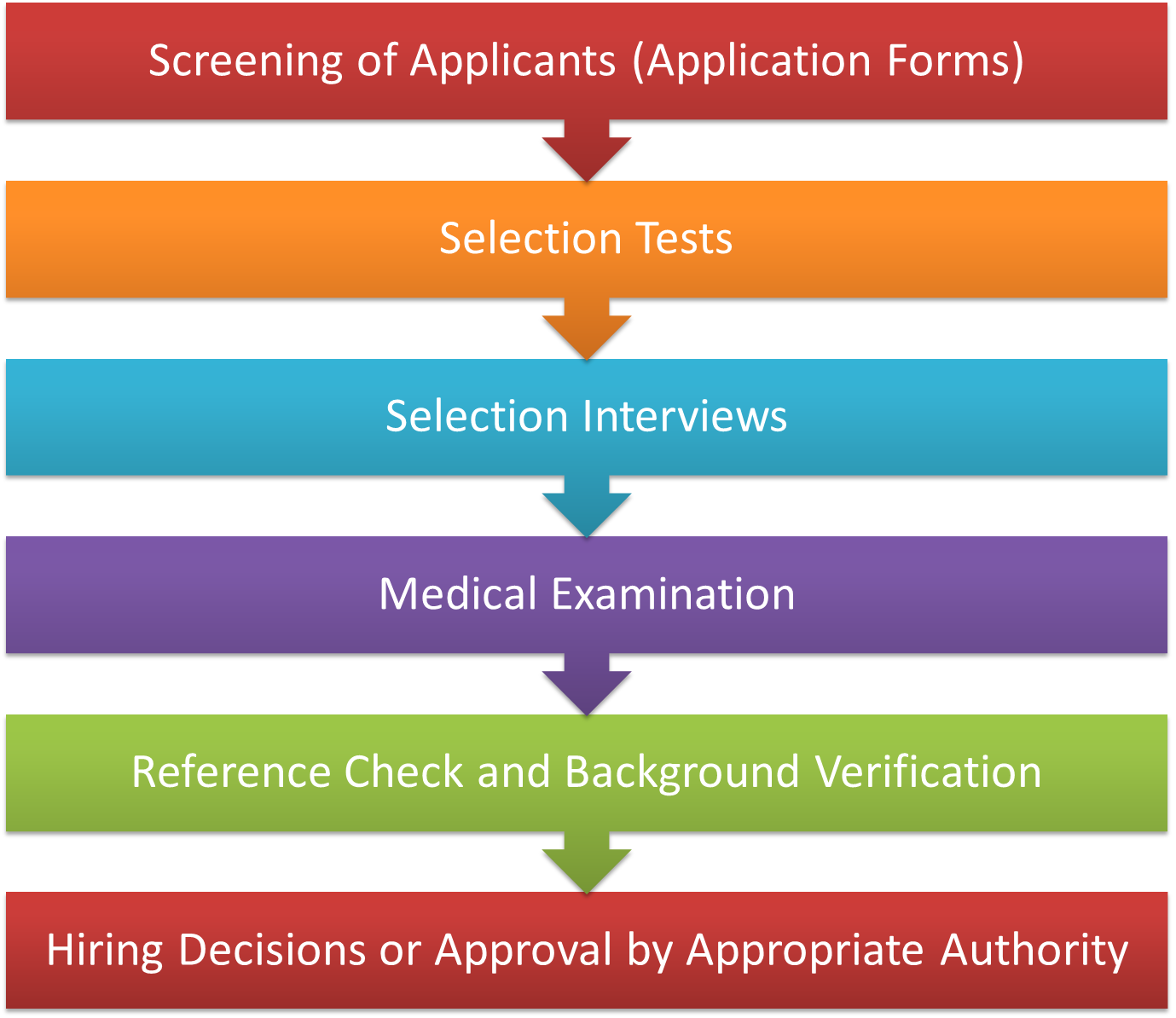The selection process consists of various barriers or stages. Selection aims at generating full information regarding the candidates in order to determine whether they are appropriate for the job or not. The selection process varies from organization to organization and from job to job. Therefore, an ideal process of selection includes the following steps as shown in Figure 1.

Figure 1: Selection Process.
1) Screening of Applicants (Application Forms): Screening of applicants includes filing up the application forms by the candidates. These application forms contain information about the applicants such as personal bio-data, achievements, experience, etc. This kind of information is utilized in order to get the right candidate, who is eligible for the vacant position. It can also be used for maintaining a permanent record of the candidates who are selected. After screening all the applicants, only those candidates are allowed for further selection process, who are meeting the job requirements and the standards set by the organization. In case, the candidates matching the job requirement are more than the vacant positions, organization goes only for few chosen candidates for further selection process.
2) Selection Tests: Every organization has its own rules for the selection process, to generate the required information about the candidate, or to reject the candidates who are not qualified for the interview. Generally, selection tests support the information provided by the applicants in the application forms. A selection test may provide useful information in terms of their aptitude, hobbies, personality, etc., which is not possible to get through an application form.
3) Selection Interviews: Selection tests are followed by a personal interview with the candidate. The main purpose of a personal interview is to fully evaluate the candidate for the job. It also gives a chance to the candidate to gain all the information about the organization. Sometimes, a preliminary interview takes place before conducting the tests.
4) Medical Examination: Medical examination is performed in order to observe the candidate’s endurance or tolerance level under pressure, as there are several jobs which require a lot of patience. Medical examination evaluates whether the candidate possesses these traits or not. It identifies the deficiencies of selective and qualitative placement for a positive cause and not for rejection only. It also indicates the suitability of a candidate for a job, and prevents his transfer to other job positions. A medical examination is performed to place the right candidates at the right jobs, where they can function without any kind of ill -effect or loss to their health. It is generally performed by the organization’s own physician or a medical officer authorized by the organization.
5) Reference Check and Background Verification: Selection procedure includes this step of a reference check and background verification for the purpose of bringing out more information regarding the candidate. Organizations request candidates for some references from whom they can gain some more information.
This information may be concerned with their background, character, working, etc. These references may include ex-employers of the candidate, people from educational institutions of the candidate, or some other important people who know the candidate’s attitude and skills. In general, references are not supposed to be of much importance due to their subjectivity, but they are an important source of valuable information, which cannot be obtained from any other source.
6) Hiring Decisions or Approval by Appropriate Authority: Finally, based on the above steps, the appropriate candidates are recommended for selection by the personnel department or selection committee. However, the personnel department or selection committee may hold the responsibility of finalizing the candidates for the job; sometimes organizations have their own staff to recommend the candidates for final selection by the top management. Generally, organizations assign different authorities to approve the final selection of candidates. On receiving the approval, the candidates are told about their selection in the organization and are requested to report to the concerned personnel.